The E-rate program provides $871.2 million of support annually for on-campus, “Category Two” (C2), networking projects. Funds For Learning estimates that the real demand for C2 E-rate discounts is $1.055 billion annually. This means there is another $184 million in discounts that could be invested in school and library networks each year. The FCC can increase the budget factors and switch to a consolidated budget system to get applicants the additional support that they need.
###
Over the past five years, 63% of sites that have applied for C2 support have received what that they need — and this is a great improvement over previous years, such as 2013 and 2014, when not a single applicant received support for on-campus networking.
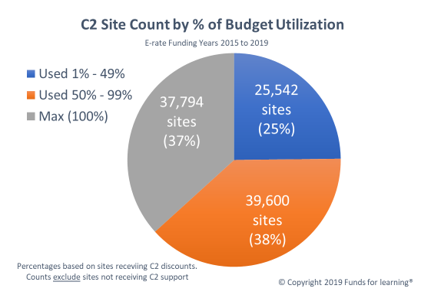
But more can be done to help schools and libraries reach their Internet connectivity goals. Over the past five year, 37% of sites applying for C2 support have “maxed out” their C2 budget, using all the discounts available to them. Most of these sites needed more financial support, but how much? We do not know exactly because applicants are required not to report expenditures above their C2 budget amount. Otherwise they lose their funding.
As described in our FCC Comments, Funds For Learning estimates that the real demand for C2 funding is $1.055 billion each year. It might be a little more. It might be a little less. Whatever the actual number is, there appears to be nearly universal agreement within the E-rate community that more support is needed.
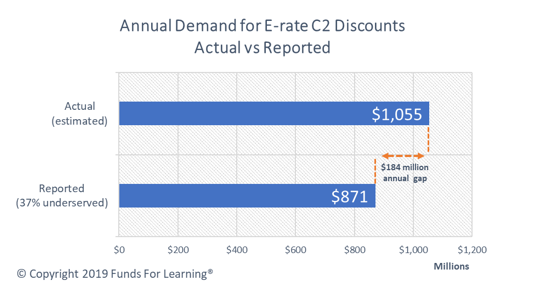
Now, the question becomes which changes to the C2 system will be most effective in closing the gap between the reported demand and the real demand? Using the data model developed for Funds For Learning’s FCC Comments and Reply Comments, below we will estimate the impact various changes could have on the E-rate program’s financial support for applicants.
###
Of the comments and ideas submitted to the FCC, there are three variables that have the most significant impact on the amount of funding available to help schools and libraries: the budget floor amount, the per student and per square foot budget cap factors, and the administration of the budgets in a site-specific or system-wide basis. The following table shows the demand from funding year 2015 to 2019, along with the estimated demand had various changes been made to the budget system. For each scenario, the budget factor(s) that has changed is highlighted.
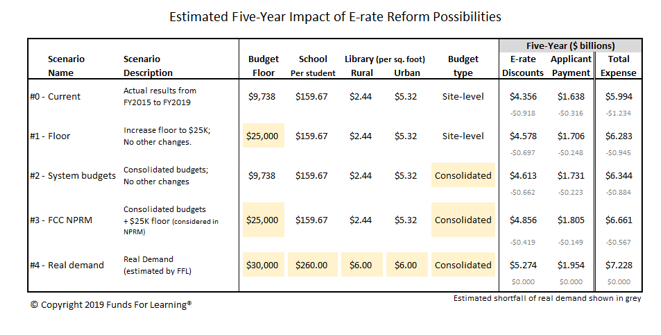
Increasing the budget floor to $25,000 per site would reduce the gap between the current support level and the actual estimated need by $44 million, leaving an annual shortfall of $139 million. Adopting system-wide budgets (a.k.a. “consolidated budgets”) would reduce the gap by $51 million, leaving an annual shortfall of $132 million. Both of these changes were mentioned as possible improvements in the FCC’s C2 NPRM. Adopting both, simultaneously, will increase the annual investment of E-rate C2 funds by an estimated $100 million, leaving a $84 million shortfall.
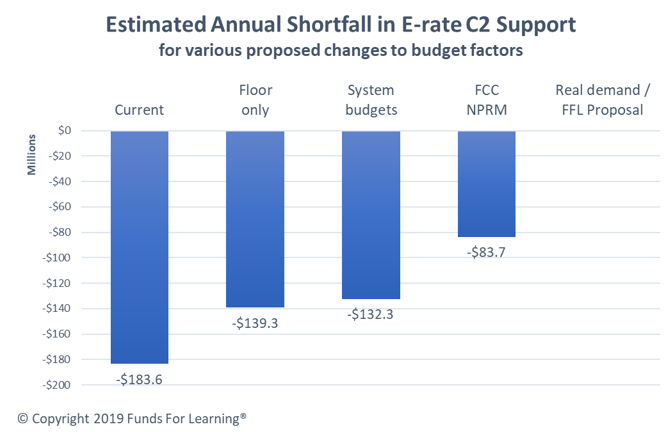
It is important to note that it will take a combined effort of changes to multiple budget factors to fulfill the needs of all applicant types. For example, assume the FCC were to adopt consolidated budgets, but nothing else. As described above, this would result in $51 million in additional annual support; however, this support would be skewed primarily towards school districts. As shown in the table below, over 40% of applicants requesting C2 support are individual school or library sites. These applicants will not share in the benefit of the consolidated budgets. Therefore, it is important that the FCC consider a range of changes as it prepares to make permanent the C2 budget system.
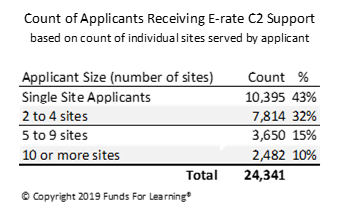
To adequately address the real needs of all school and library sites, our analysis suggests that a total of $184 million in additional E-rate support is needed each year. Funds For Learning recommends a $30,000 per site budget floor; a $260 per student budget cap (for schools); a $6.00 per square foot budget cap (for libraries); and adoption of a consolidated budget system for school districts. We believe that this combination of changes would provide the necessary financial support and would do so in a manner that best suits the varying needs of different applicants.
